Commentaries /
April 2023 LFS: The “can’t stop, won’t stop” jobs juggernaut continues
April 2023 LFS: The “can’t stop, won’t stop” jobs juggernaut continues
Canada’s economy added another 35,000 jobs in March, and 231,100 in the first quarter — an impressive number that tops even the most optimistic forecaster’s call.



Stephen Tapp

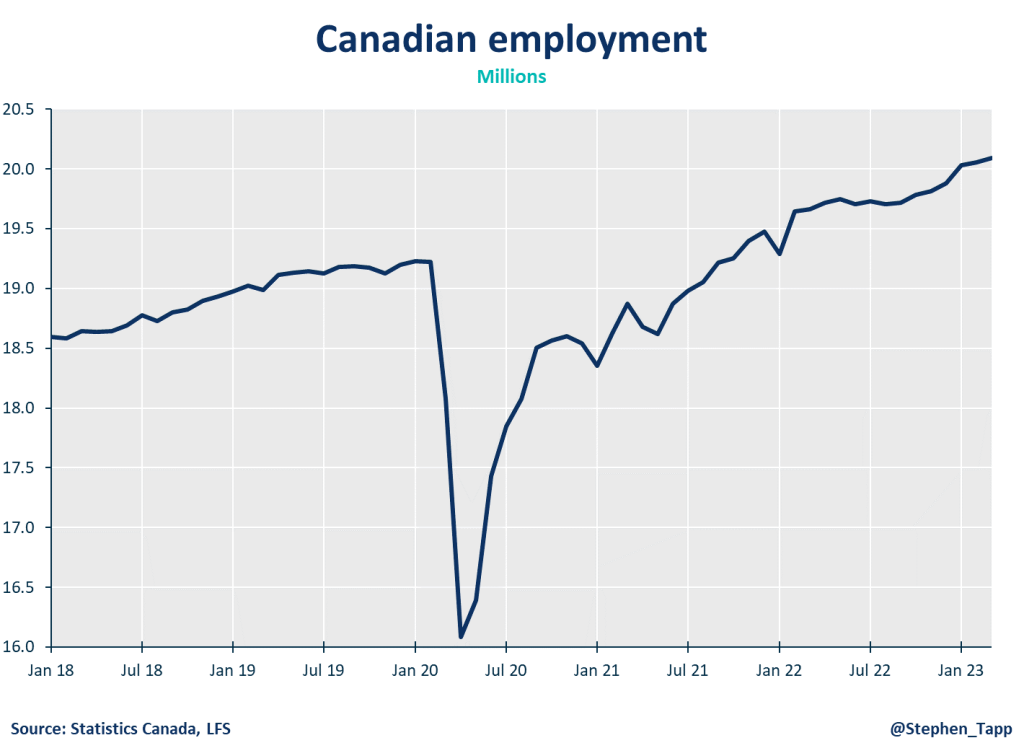
Today’s data continue to underscore the resilience of Canada’s labour market at a time when many are waiting for a recession to hit. Canada’s economy added another 35,000 jobs in March, and 231,100 in the first quarter — an impressive number that tops even the most optimistic forecaster’s call. Hours worked remain strong, suggesting Canada’s GDP growth will post a solid bounce-back in the first quarter. Wage growth of 5.3% year-over-year finally jumped past the rate of inflation. The Bank of Canada is unlikely to deviate from their paused position next week. But at some point, if these dynamics continue, interest rates may need to go higher.
Stephen Tapp, Chief Economist, Canadian Chamber of Commerce
KEY TAKEAWAYS
- Canadian employment rose by a solid 34,700 jobs in March, continuing the trend of beating market expectations (7,500).
- Total hours worked increased 0.4%, and gained an impressive 5% annualized for the first quarter.
- The unemployment rate held steady at 5.0% for the fourth straight month, and remains near generational lows.
- Job gains were concentrated in the private sector (+35k), which is welcome news, and continues to close the gap with the public sector that drove employment growth earlier in the pandemic.
- By sector, job gains were led by services (76k): specifically transportation and warehousing (41k, recouping equivalent losses over the first two months of the year), business services (31k) and finance and insurance (19k). Employment was down in goods-producing sectors (-41k), falling in construction (-19k) and natural resources (-11k).
- In this tight labour market, average hourly wage growth remained strong at 5.3% year-over-year, and is now running slightly higher than CPI inflation (5.2%).
- Provincial employment increased in Ontario, Manitoba, Alberta and Prince Edward Island, but declined in Saskatchewan.
- As Canada’s workforce grows it is becoming more diverse. In March, racialized groups comprised 28.6% of the employed population in Canada. The largest racialized groups are South Asian, Chinese and Black Canadians, together representing 17% of employment.
SUMMARY TABLES
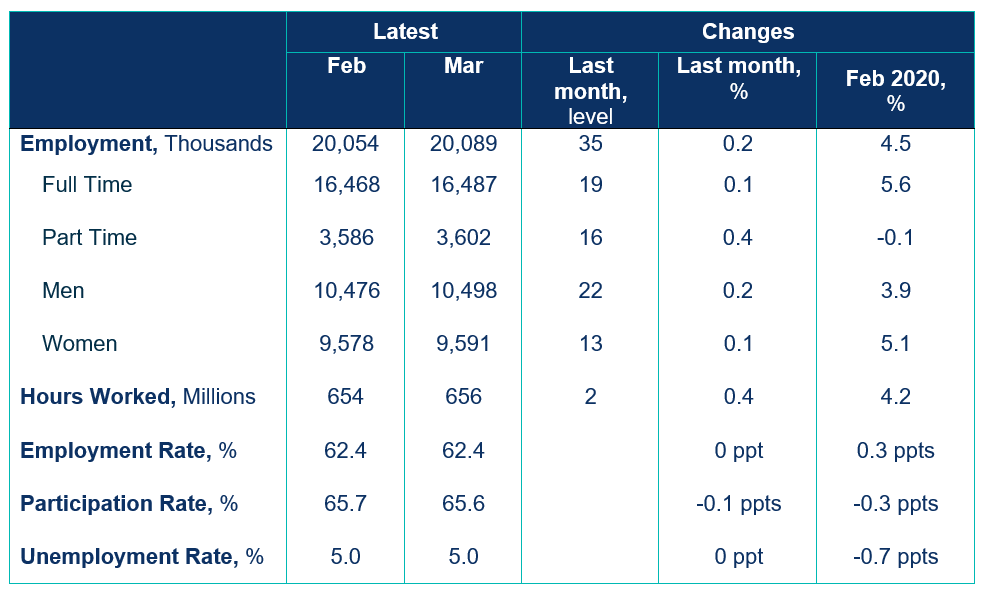
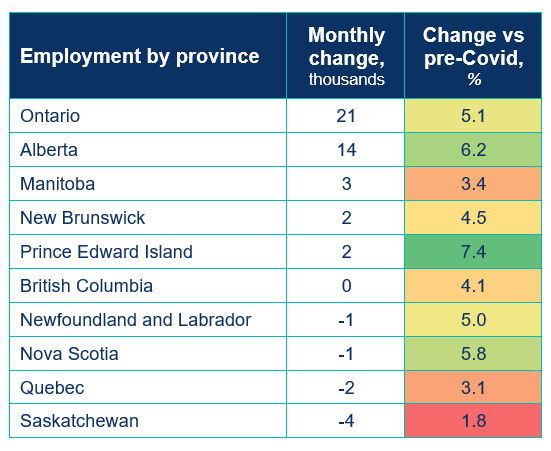

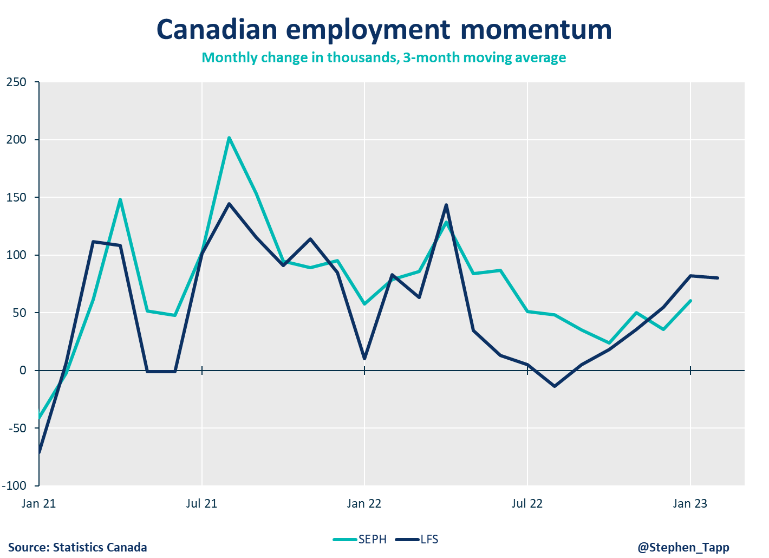

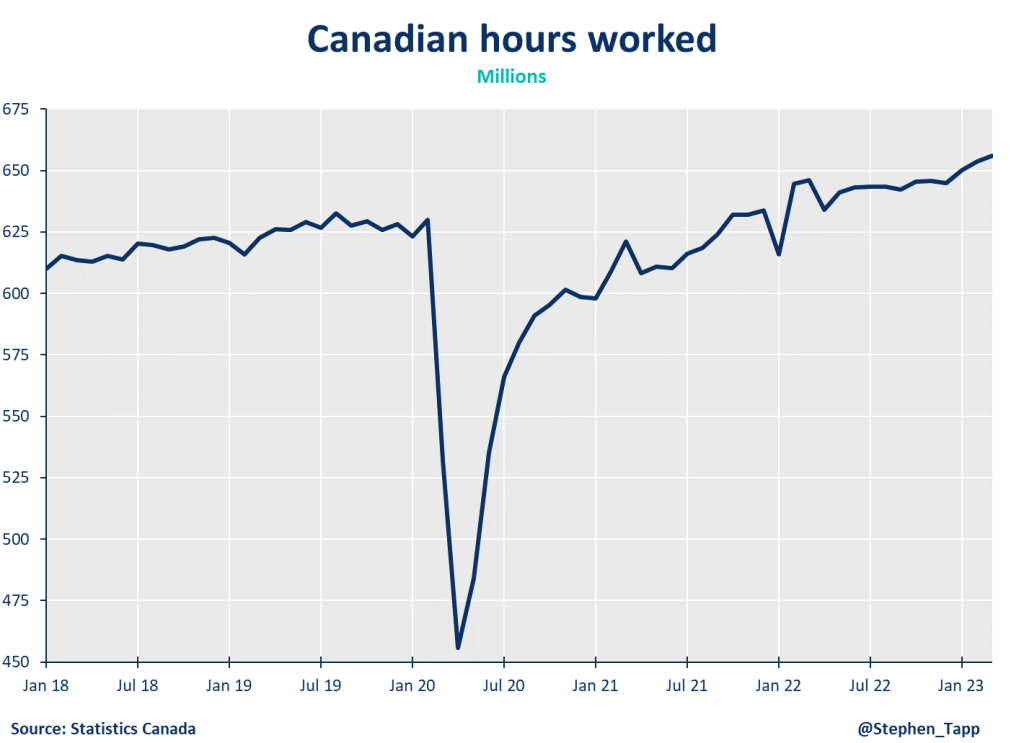
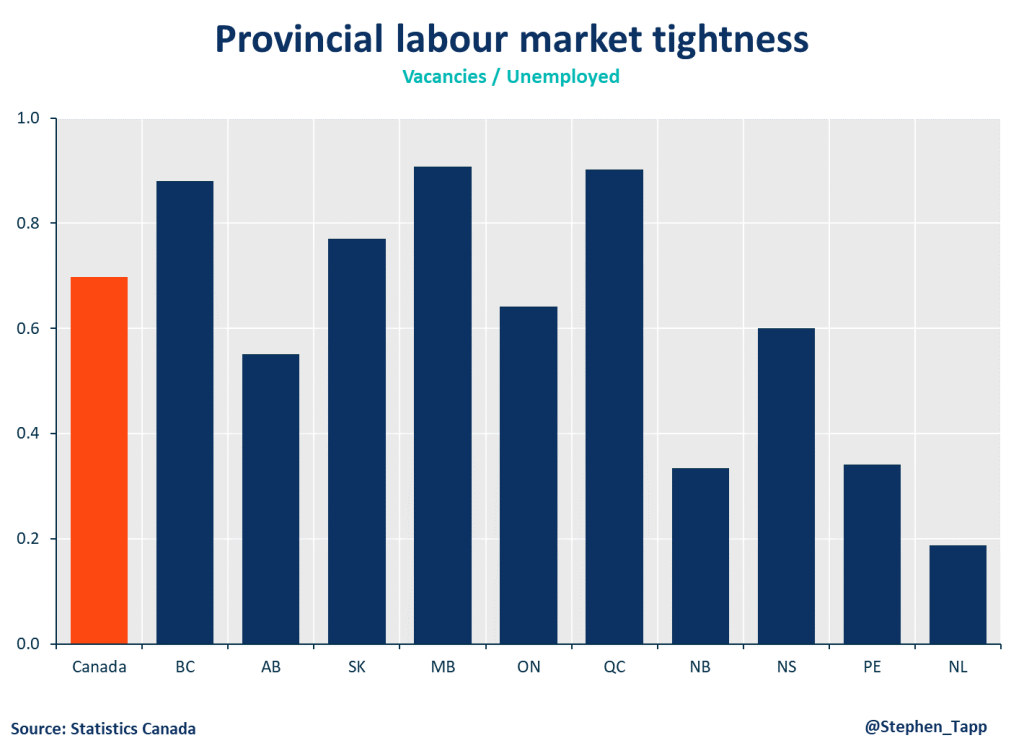
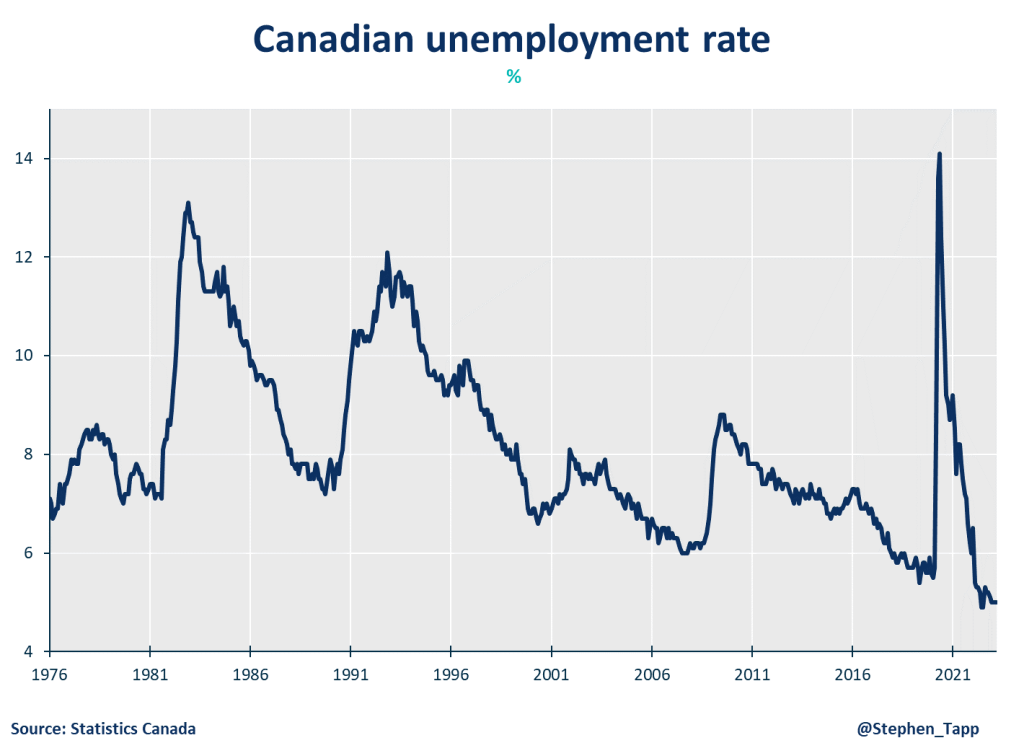

Other Commentaries

Oct 19, 2022
September 2022 Consumer Price Index data: Food and services prices still rising, no progress on core inflation

Sep 20, 2022
August 2022 Consumer Price Index data: Finally some good news on Canadian inflation.

Aug 16, 2022